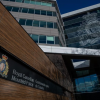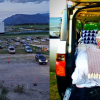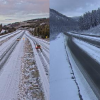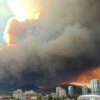We’re well into summer now and fortunately there is only one wildfire of note in British Columbia right now.
While that can change quickly, as we’ve seen in previous years, the BC Wildfire Service took some time today to give the public a little wildfire education.
You have likely heard the term “rank” used to describe a wildfire, but do you know what that means? If not, the BCWS has you covered.
“The rank, which is determined by observing the fire, helps guide response strategies,” explained a BCWS post.
“Ranking starts with rank one, which means a smouldering ground fire without open flame, and ends at rank six with extreme, aggressive and violent fire behaviour.”
According to the BCWS, response tactics may change as a fire reaches higher ranks.

Here’s a run down of ranks one through six and what that means for the BCWS when it comes to battling the fire:
Rank 1
- Smouldering ground fire with no open flame. White smoke. Slow rate of fire spread.
- Direct attack with ground crews using hand tools and water delivery systems like pumps and hoses.
Rank 2
- Low-vigour surface fire with visible, open flame. Unorganised or inconsistent flame front. Slow rate of spread.
- Direct attack with ground crews using hand tools, water delivery systems or heavy equipment. Hand constructed control lines and lines that have been cleared of combustible material will likely be successful.
Rank 3
- Moderately vigorous surface fire with an organised flame front and occasional candling. Moderate rate of spread.
- Ground crews may require air support and control lines will likely need to be constructed with heavy equipment to be effective.
Rank 4
- Highly vigorous surface fire with torching. Grey to black smoke with an organised surface flame front. Moderate to fast rate of spread on the ground, with short aerial bursts through the forest canopy.
- Indirect tactics may be required to bring the head of the fire under control. Parallel attack may be used along flanks of the fire to direct the head into favourable ground or fuels. Air operations likely needed.
Rank 5
- Extremely vigorous surface fire or active crown fire. Black to copper smoke with an organised crown fire front. Moderate to long-range spotting and independent spot fire growth.
- Limited options available, but indirect attack and planned ignitions to remove fuel in the fire’s path is likely needed. Ground operations are usually restricted to fighting the least active sections of the fire.
Rank 6
- A blow up or conflagration, extreme and aggressive fire behaviour. Possible fireballs and whirls with violent fire behaviour probably. A dominant smoke column may develop.
- Firefighting under these conditions is extremely dangerous and suppression efforts will be well away from active fire behaviour. It may include preparing structure protection measures or conducting indirect large-scale ignition operations in an attempt to steer the fire. Safest strategy is often to pull resources back to safe areas and wait for fire behaviour to lessen before re-engaging.

















